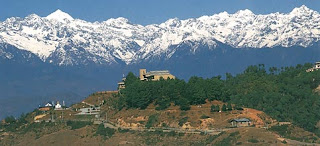 Established with in the shadows of royalty, the Narayanhity Palace or museum has long served as the residence for the kings of Shah Dynasty. The palace or museum was built 40 years back with a rigorous construction of six years. On June 1, 2001, the then King Birendra and his whole family were massacred in the palace compound, along with 6 others royal family members. The Constituent Assembly on May 28, 2009 had decided to convert the Narayanhity palace into a public museum. The palace spreads in 753 ropanies (more than 4 million square feet). The museum occupies only 318 ropnies with 54 rooms where only 19 have been made accessible to the public. Similarly, the abode also shares the space with Nepal’s Foreign Ministry and Security bodies. The main attraction of the museum is the golden and silver Ceremonial throne, Banquette hall and other vivid items used by the royal family. The museum would open five days a week except on Tuesdays, Wednesdays and public Holidays from 11 AM to 3 PM. Likewise, the entrance fee for the Narayanhity Museum has been allocated as followed: Nepali Student Nrs 20, Other Nepalese Nrs 100, Chinese and SAARC Tourist Nrs 250, other tourist Nrs 500 and fee has been leaved for children below 3 years of age.
Established with in the shadows of royalty, the Narayanhity Palace or museum has long served as the residence for the kings of Shah Dynasty. The palace or museum was built 40 years back with a rigorous construction of six years. On June 1, 2001, the then King Birendra and his whole family were massacred in the palace compound, along with 6 others royal family members. The Constituent Assembly on May 28, 2009 had decided to convert the Narayanhity palace into a public museum. The palace spreads in 753 ropanies (more than 4 million square feet). The museum occupies only 318 ropnies with 54 rooms where only 19 have been made accessible to the public. Similarly, the abode also shares the space with Nepal’s Foreign Ministry and Security bodies. The main attraction of the museum is the golden and silver Ceremonial throne, Banquette hall and other vivid items used by the royal family. The museum would open five days a week except on Tuesdays, Wednesdays and public Holidays from 11 AM to 3 PM. Likewise, the entrance fee for the Narayanhity Museum has been allocated as followed: Nepali Student Nrs 20, Other Nepalese Nrs 100, Chinese and SAARC Tourist Nrs 250, other tourist Nrs 500 and fee has been leaved for children below 3 years of age.By Shreedeep Rayamajhi



